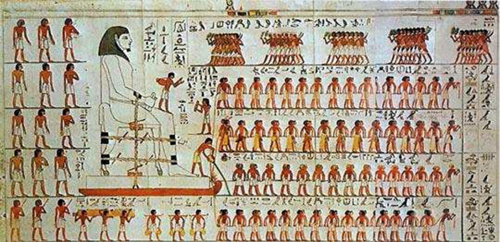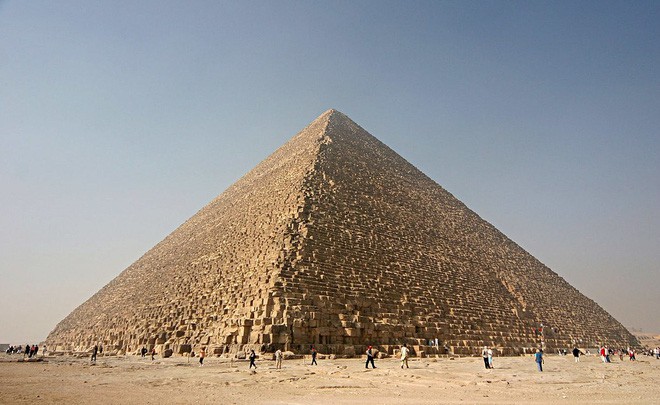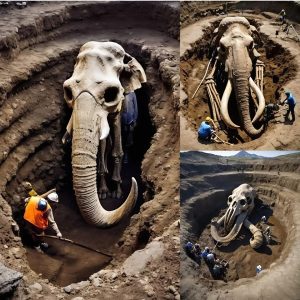For centuries, the Great Pyramid of Giza has stood as a testament to the ingenuity and skill of the ancient Egyptians. As one of the Seven Wonders of the Ancient World, this colossal structure has inspired awe and wonder, leading to countless theories about how such a monumental feat of engineering was accomplished over 4,500 years ago. Thanks to advances in physics, we are now closer than ever to understanding the methods used by the ancient Egyptians to build the Giza pyramid—a marvel of human achievement.
The Timeless Mystery of the Great Pyramid
The Great Pyramid, built for the Pharaoh Khufu, is the largest of the three pyramids on the Giza Plateau. Standing at a height of 481 feet (originally), it was the tallest man-made structure in the world for over 3,800 years. Constructed from approximately 2.3 million limestone blocks, each weighing between 2.5 and 15 tons, the logistics of its construction have baffled historians, archaeologists, and engineers alike.
For centuries, theories have abounded about how the ancient Egyptians could have transported such massive stones and assembled them with such precision. Some have suggested the use of ramps, while others have speculated about more exotic methods, including the involvement of extraterrestrial beings. However, recent insights from the field of physics have provided a more grounded, yet no less fascinating, explanation.
Physics and the Pyramid: A Match Made in Antiquity
The key to understanding the construction of the Great Pyramid lies in the principles of physics—specifically, the understanding of friction, force, and materials science. One of the most significant discoveries came when researchers uncovered evidence suggesting that the ancient Egyptians may have used water to reduce friction when transporting the massive limestone blocks.
The Water Sled Theory
In 2014, a team of physicists from the University of Amsterdam made a groundbreaking discovery. By analyzing an ancient tomb painting, they proposed that the Egyptians used a technique known as “wetting the sand” to transport the massive stone blocks across the desert. The painting depicted workers pouring water in front of a sled carrying a large statue.
The physics behind this method is simple yet ingenious. When sand is dry, it creates a high level of friction, making it difficult to drag heavy objects across it. However, when sand is slightly moistened, it forms tiny bridges between the grains, effectively reducing friction and making it easier to slide heavy objects. This would have allowed the ancient Egyptians to move massive stone blocks with far less effort than previously thought.
Further experiments conducted by the researchers confirmed that the optimal amount of water reduced the force required to pull the sled by up to 50%. This discovery aligns with historical evidence and provides a plausible explanation for how the Egyptians could have transported the enormous stones needed to construct the pyramid.

The Spiral Ramp Hypothesis
Another major breakthrough came in the understanding of how the Egyptians managed to lift the stones to such great heights. While the traditional straight ramp theory has been debated for years, a new hypothesis suggests that the Egyptians may have used an internal spiral ramp within the pyramid itself.
French architect Jean-Pierre Houdin proposed that a spiral ramp was built inside the pyramid’s walls, which would have allowed workers to transport the blocks upward in a continuous, circular motion. This method would have been more efficient and required less material than a massive external ramp.
Houdin’s theory gained traction when physicists and engineers used 3D modeling and computer simulations to test the feasibility of such a ramp. The results were promising, showing that an internal spiral ramp could have provided the necessary support and space to move the blocks to the higher levels of the pyramid.
Materials Science: The Mystery of the Pyramid’s Precision
The precision with which the Great Pyramid was constructed has also long been a source of amazement. The alignment of the pyramid with the cardinal points, the near-perfect squareness of its base, and the meticulous fitting of its stones suggest a level of sophistication that seems almost impossible without modern tools.
Here again, physics provides answers. Recent studies in materials science have shown that the Egyptians had a deep understanding of the properties of the materials they were working with. By carefully selecting and preparing the limestone and granite, they were able to achieve an exceptional level of precision.
The Egyptians also made use of a technique called “thermal expansion” to help in the cutting and shaping of the stone. By heating the rock with fire and then cooling it rapidly with water, they could create cracks in the stone, making it easier to split and shape. This method, combined with their advanced knowledge of geometry, allowed them to create the incredibly precise joints and smooth surfaces seen in the pyramid.

Conclusion: The Genius of Ancient Engineering
The Great Pyramid of Giza is more than just a monument; it is a testament to the incredible ingenuity and skill of the ancient Egyptians. Thanks to the insights provided by physics, we are beginning to unravel the secrets of how this wonder of the world was built. The use of water to reduce friction, the possibility of an internal spiral ramp, and the sophisticated understanding of materials science all point to a civilization that was far ahead of its time.
As we continue to study the Great Pyramid and apply modern scientific techniques to ancient mysteries, we gain not only a greater appreciation for the achievements of our ancestors but also a deeper understanding of the timeless principles of physics that govern our world. The Great Pyramid stands as a bridge between the past and the present, reminding us that even the most monumental of human endeavors can be explained through the lens of science.





